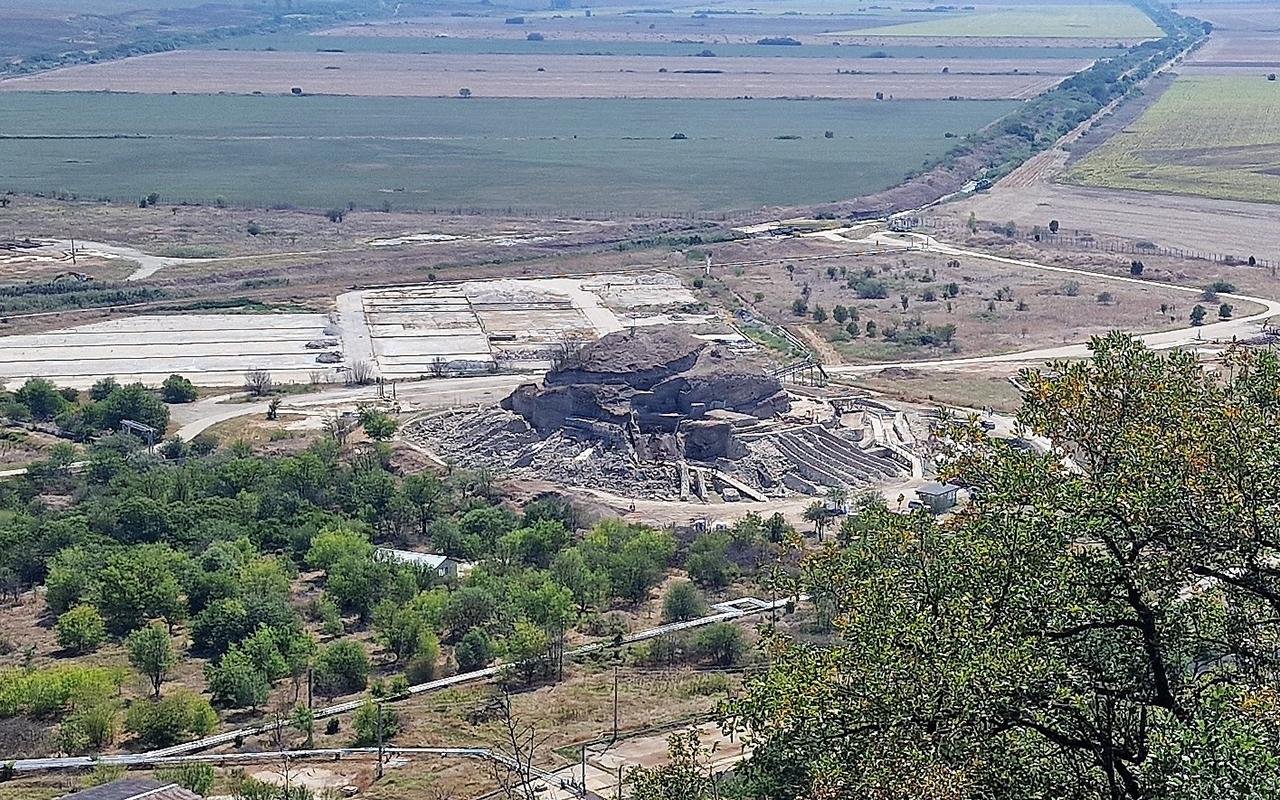Archaeologists have uncovered a significant ritual pit filled with ceremonial objects during ongoing excavations at the prehistoric salt production center known as Solnitsata, near the town of Provadia in Bulgaria’s Varna region. This ancient settlement, believed to be the oldest town in Europe, dates back to around 5600 BCE and was a major center for salt production in the Balkans during the Chalcolithic (Copper Age) period.
 Site of Solnitsata. Credit: Pl71, CC BY-SA 4.0
Site of Solnitsata. Credit: Pl71, CC BY-SA 4.0
Solnitsata, which means “The Saltworks,” derived its prosperity from its advanced salt production methods. Salt was an invaluable commodity at the time, and the settlement exported it across the region. The inhabitants collected brine from nearby salt springs, which was placed in ceramic jars. These jars were heated by fires, causing the brine to boil and leaving behind a semi-dry layer of salt. Over time, the process became more efficient, with dedicated furnaces enabling the production of up to 30 kilograms of salt from a single batch. This salt not only sustained the settlement’s economy but also made it a prominent trading hub.
The discovery of the ritual pit, which dates to the Late Chalcolithic period, was reported by the head of the excavation, Academician Vasil Nikolov. He noted that the pit, likely created around 4,350 BCE, contains significant ceremonial items, including a well-preserved zoomorphic ceramic vessel shaped like a bull. According to Nikolov, bulls symbolized male strength and fertility in European Neolithic and Chalcolithic cultures, and the vessel was probably used to hold liquid for ritual purposes. “Only a few such vessels have been found in the country, but this one has the finest craftsmanship I’ve ever seen,” Nikolov told reporters.
The pit also contained anthropomorphic figurines, geometric-patterned vessels, and various objects made from bone and ceramics. Nikolov highlighted that this is the first pit of its kind discovered at the site, and further investigations are ongoing to understand its full significance.
In addition to the ritual pit, archaeologists have been studying other parts of the settlement, uncovering evidence of its advanced infrastructure and wealth. This year’s research has revealed the remains of several multi-story houses, which were likely used both for living and storing salt. “It is still unclear how the ancients built two- and three-story houses, but no single-story house has been found at the site,” Nikolov said.
The settlement, however, faced a decline after a series of devastating earthquakes, which damaged its fortifications and disrupted its salt production. Despite this, the site remained significant, with later occupations by Thracians and other cultures. Among the recent discoveries is a part of a Thracian ruler’s house, dating from centuries after Solnitsata’s peak, further showing the site’s long-term importance.
Nikolov emphasized the need for greater recognition of Solnitsata’s historical significance. “The prehistoric salt production center here is not only one of the oldest in Europe, but the stone walls of this settlement were built two millennia before the pyramids in Egypt,” he said, advocating for more state support to promote the site.
The site has been dubbed Europe’s first “mint,” as salt was the most valuable resource at the time, much like gold or currency in later eras.





